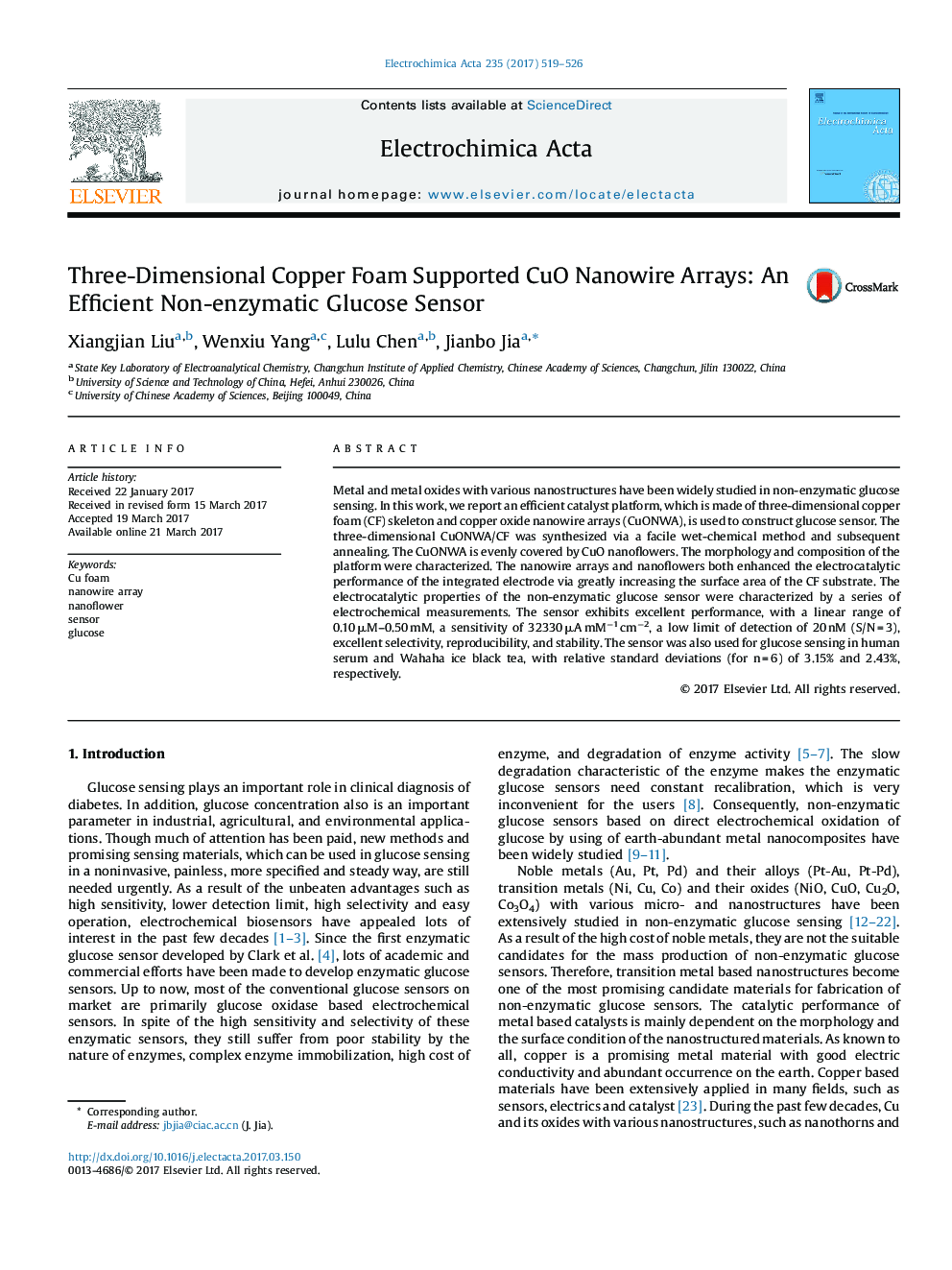| Article ID | Journal | Published Year | Pages | File Type |
|---|---|---|---|---|
| 6471675 | Electrochimica Acta | 2017 | 8 Pages |
â¢The CuO nanowire arrays composite was synthesized on copper foam.â¢The CuO nanowires were covered by CuO nanoflowers evenly, providing more active sites.â¢The sensor exhibits excellent sensitivity, selectivity, reproducibility, and stability toward glucose sensing without any polymer binder.â¢The sensor can determine glucose concentration in human serum and tea.
Metal and metal oxides with various nanostructures have been widely studied in non-enzymatic glucose sensing. In this work, we report an efficient catalyst platform, which is made of three-dimensional copper foam (CF) skeleton and copper oxide nanowire arrays (CuONWA), is used to construct glucose sensor. The three-dimensional CuONWA/CF was synthesized via a facile wet-chemical method and subsequent annealing. The CuONWA is evenly covered by CuO nanoflowers. The morphology and composition of the platform were characterized. The nanowire arrays and nanoflowers both enhanced the electrocatalytic performance of the integrated electrode via greatly increasing the surface area of the CF substrate. The electrocatalytic properties of the non-enzymatic glucose sensor were characterized by a series of electrochemical measurements. The sensor exhibits excellent performance, with a linear range of 0.10 μM-0.50 mM, a sensitivity of 32330 μA mMâ1 cmâ2, a low limit of detection of 20 nM (S/N = 3), excellent selectivity, reproducibility, and stability. The sensor was also used for glucose sensing in human serum and Wahaha ice black tea, with relative standard deviations (for n = 6) of 3.15% and 2.43%, respectively.
Graphical abstractDownload high-res image (109KB)Download full-size image
